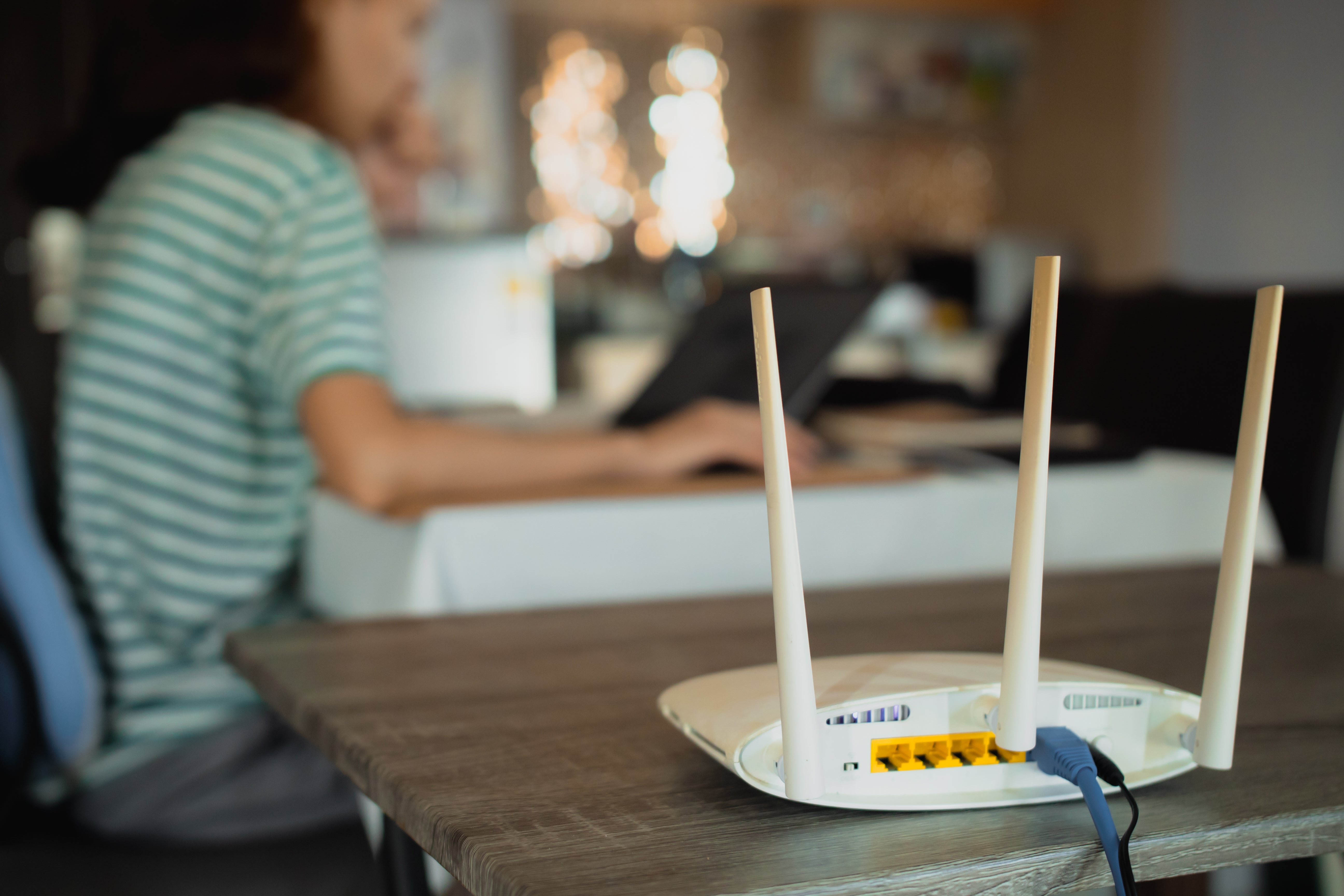Fibre to the Cabinet Broadband: What is FTTC and how does it work?
If you’ve got business broadband at your workplace, then you’ll be accessing the internet with an FTTC connection. You might even have an FTTP connection. But what does it all mean? And what’s the right type of connection for the needs of your business? We’ll explain it all in this guide.
What is fibre to the cabinet broadband?
Fibre to the cabinet broadband (or FTTC for short) is an internet connection that runs along fibre optic cables from the telephone exchange to the (usually green) roadside cabinet. Standard copper telephone lines are then used to deliver broadband from the cabinet to various properties in the area.
This is different from fibre to the premises (FTTP) broadband, which uses a fibre optic connection all the way from the exchange to the property.

How does FTTC work?
FTTC provides superfast broadband connections to homes and businesses by using fibre optic cables to connect the nearest telephone exchange (where calls and connections are routed) to the roadside cabinet (where calls and connections are routed to individual premises).
Calls and connections from these cabinets are then distributed to individual premises by standard copper phone lines, which transmit data slower than fibre optic cables.
This part of the connection is known as the ‘last mile’ (even if it’s less than a mile between the cabinet and your property), and the further you are from the cabinet, the slower your broadband will run along the less-efficient copper wires.
What equipment do you need for FTTC?
As most properties are connected to the analogue phone network (also known as the public switched telephone network or PTSN) via the standard copper wires, not much equipment is needed to connect to FTTC broadband.
Assuming all the standard infrastructure is in place, including fibre optic cables from the exchange to the cabinet and copper cables from the cabinet to your premises, then you should only need the following kit to connect to superfast broadband:
- A modem and router – Usually provided by your internet service provider (ISP), the modem connects your premises to the internet and the router creates the network inside your business.
- Internet-enabled devices – You can connect devices like PCs, laptops, smartphones, smart speakers, and other smart devices to the router using an ethernet cable or WiFi.
What speeds does FTTC offer?
An FTTC connection generally offers download speeds between 40Mbps and 80mbps and upload speeds between 2Mbps and 20Mbps.
Download speeds are the ones to look out for when you want to browse online, download files, or stream content. Upload speeds are what you need to consider when uploading or sending files online. For more information, check out our guide to upload and download speeds.
The speeds you get will depend on things like the distance between your premises and the exchange, the quality of your modem and router, and the number of people sharing the connection.
The rule of thumb is that your connection will be faster the closer you are to the exchange and the fewer people that are connected to your network.
Is FTTC broadband reliable?
The reliability of your service will depend on your hardware and ISP, but FTTC generally offers reliable and high-quality connection speeds. But because FTTC broadband uses the analogue copper wire network to connect the cabinet to your premises, speeds can slow down and connections can be less reliable at certain times of the day.
Which providers offer FTTC?
At Bionic, we only work with a panel of trusted UK phone and broadband providers that offer competitive rates, reliable service, and the speeds your business needs. This means all our suppliers offer a range of broadband solutions and the following offer FTTC:
- Daisy Communications – Award-winning B2B connectivity specialists with 88,000 commercial customers of all sizes and sectors, specialists in business VoIP and premium connectivity solutions.
- Focus Group – The UK’s leading B2B independent providers of business technology, specialists in VoIP.
- Plusnet – Broadband and phone provider with a UK-based support team that’s available 24/7.
- TalkTalk Business – Communications provider for over 25 years with over 180,000 business customers.
- BT – The UK’s largest supplier of business broadband.
Compare business broadband and phone lines today with Bionic to get the best deal.
Is FTTC broadband available to your business?
FTTC is the most widely available superfast broadband service in the UK, with around 96% coverage, so it’s likely that you’ll be able to access it in your area. If you can’t yet get it, your area might be due for an upgrade as part of the digital switchover that will see the complete switch off of the analogue system completely in 2025.
An overview of the pros and cons of FTTC
Although FTTC offers a good way to get superfast broadband, it’s not without its drawbacks. Here are some pros and cons to consider.
What are the benefits of FTTC broadband for business?
- High availability and low costs – FTTC connections use existing copper phone lines and are available in most areas of the UK – it currently has a 96% availability rate. This also helps to keep costs down as there’s no need to install new technology, and maintenance costs are relatively low.
- Fast download and upload speeds - FTTC partially uses fibre optic cables, which are more reliable and carry data quicker than copper lines. This means you’ll get faster speeds than you would with ADSL. You can find out more about the different broadband connection types in our guide to bandwidth.
What are the drawbacks of FTTC broadband for business?
- Variable speeds – The downside of using the existing copper phone lines is that download and upload speeds will vary depending on how many people you’re sharing the connection with at any one time. And while FTTC is faster than ADSL, using this old tech means it’s slower than FTTC or leased line broadband.
- No service level agreements for business - One of the benefits of business broadband is that suppliers offer service level agreements (SLAs) that give guaranteed uptime, constant monitoring of connections, and speedy troubleshooting. SLAs like this aren’t offered with FTTC.
- Soon to be obsolete tech – The 2025 digital switchover means that all copper landlines will be switched off within the next couple of years. This means that anyone using an FTTC connection will need to switch to more up-to-date tech like FTTC or Single Order Generic Ethernet Access (SOGEA).
Is FTTP or FTTC right for your business?
This all depends upon the needs and budget of your business. FTTC offers a relatively low-cost way of getting superfast broadband. It can quite comfortably run multiple devices, including VoIP, and should be suitable for most micro businesses and small businesses.
The major downside is that it has a very limited shelf-life. The analogue switch off has already begun and FTTC will no longer be available from 2025. This means you’ll need to switch to an alternative, such as FTTC, SOGEA, or leased line broadband, to keep your internet and phone connections.
To find out the right phone and broadband solution for your business, speak to the tech-enabled connectivity experts at Bionic. We’ll compare a range of phone, broadband, and VoIP packages from a panel of trusted suppliers to make sure you get the right speeds and solutions and help to future-proof your systems.








